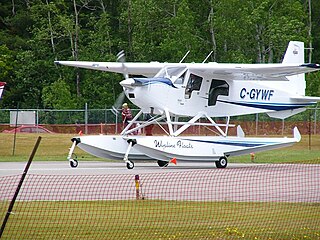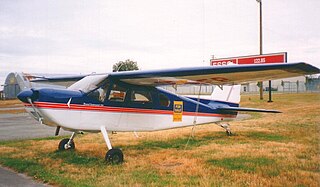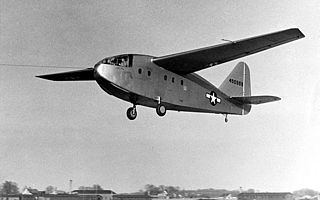Related Research Articles

Saab AB is a Swedish aerospace and defence company, founded in 1937. Saab produced automobiles from 1947 until 1990 when the automobile division was spun off as Saab Automobile, a joint venture with General Motors. The joint venture ended in 2000 when GM took complete ownership. Between 1968 and 1995 the company was in a merger with commercial vehicle manufacturer Scania-Vabis, known as Saab-Scania. The two were de-merged in 1995 by the new owners, Investor AB. Despite the demerger, both Saab and Scania share the right to use the griffin logo, which originates from the coat of arms of the Swedish region of Scania.
Westland Helicopters was a British aircraft manufacturer. Originally Westland Aircraft, the company focused on helicopters after the Second World War. It was amalgamated with several other British firms in 1960 and 1961.

The Douglas Aircraft Company was an American aerospace manufacturer based in Southern California. It was founded in 1921 by Donald Wills Douglas Sr. and later merged with McDonnell Aircraft in 1967 to form McDonnell Douglas; it then operated as a division of McDonnell Douglas. McDonnell Douglas later merged with Boeing in 1997.

Convair, previously Consolidated Vultee, was an American aircraft manufacturing company that later expanded into rockets and spacecraft. The company was formed in 1943 by the merger of Consolidated Aircraft and Vultee Aircraft. In 1953, it was purchased by General Dynamics, and operated as their Convair Division for most of its corporate history.

The Hughes Aircraft Company was a major American aerospace and defense contractor founded in 1932 by Howard Hughes in Glendale, California as a division of Hughes Tool Company. The company was known for producing, among other products, the Hughes H-4 Hercules Spruce Goose aircraft, the atmospheric entry probe carried by the Galileo spacecraft, and the AIM-4 Falcon guided missile.

The Silver Dart was a derivative of an early aircraft built by a Canadian/U.S. team, which after many successful flights in Hammondsport, New York, earlier in 1908, was dismantled and shipped to Baddeck, Nova Scotia. It was flown from the ice of Baddeck Bay, a sub-basin of Bras d'Or Lake, on 23 February 1909, making it the first controlled powered flight in Canada. The aircraft was piloted by one of its designers, Douglas McCurdy. The original Silver Dart was designed and built by the Aerial Experiment Association (AEA), formed under the guidance of Dr. Alexander Graham Bell.
The Société des Ateliers d'Aviation Louis Bréguet also known as Bréguet Aviation was a French aircraft manufacturer.

The Hiller OH-23 Raven is a three-place, military light observation helicopter based on the Hiller Model 360. The Model 360 was designated by the company as the UH-12, which was first flown in 1948.

Prajavani is a leading Kannada-language broadsheet daily newspaper published in Karnataka, India. Having a readership of over 2.01 million, it is one of the largest circulated newspapers in the state.

Found Aircraft Canada was an aircraft manufacturer based in Parry Sound, Ontario. Found originally formed in 1946 to produce a new bush plane design, the FBA-1, but entered production in 1964 with the Found FBA-2. The original company ceased production of the FBA-2 in 1967. In 1994 the company re-formed and starting in 1997 placed the FBA-2 back in production as the FBA-2C1 Bush Hawk and FBA-2C2 Bush Hawk-XP.
The Found FBA-1 was a 1940s Canadian four-seat cabin monoplane produced by Found Brothers Aviation.

The Found FBA-2 is a 1960s Canadian four/five-seat cabin monoplane that was produced by Found Aircraft.

The Found Centennial 100 is a Canadian six-seat cabin monoplane produced by Found Brothers Aviation.

The FBA Type A and the similar Type B and C were a family of reconnaissance flying boats produced in France prior to and during World War I. All three were unequal-span pusher biplane flying boats with a single step hull made of ash longerons covered in laminated wood, divided by bulkheads into eight compartments. The empennage was carried on an upswept curved extension of the hull made from steel tubing. The pilot and observer sat side by side in the open cockpit.

The FBA 19 was a flying boat bomber developed in France in 1924 by Franco-British Aviation.

The FBA 21 and 23 were small flying boat airliners built in France in the mid-1920s. Their development was an attempt by FBA to develop a commercial version of their FBA 19 bomber which had failed to attract orders from military buyers. Retaining the same basic design as their predecessor, the Model 21 added an enclosed cabin for four passengers. Unfortunately for FBA, they aroused as little interest as their military counterparts, and only a handful were built in a number of slight variations, including one example of a dedicated mail plane.

Franco-British Aviation was an aircraft manufacturer of the early 20th century, headquartered in London and with its production facilities around Paris. Specialising in seaplanes, it was established in 1913 by Louis Schreck and André Beaumont.

The Lohner L was a reconnaissance flying boat produced in Austria-Hungary during World War I. It was a two-bay biplane of typical configuration for the flying boats of the day, with its pusher engine mounted on struts in the interplane gap. The pilot and observer sat side by side in an open cockpit, and both the upper and lower sets of wings featured sweepback.

The Chase CG-14, also known as the G-14 or Model MS.1, was an assault glider manufactured by Chase Aircraft for the United States Army Air Forces during the Second World War. The aircraft failed to progress beyond the prototype stage, being overtaken by larger, improved glider designs.
References
- Notes
- Bibliography
- The Illustrated Encyclopedia of Aircraft (Part Work 1982-1985). London: Orbis Publishing.